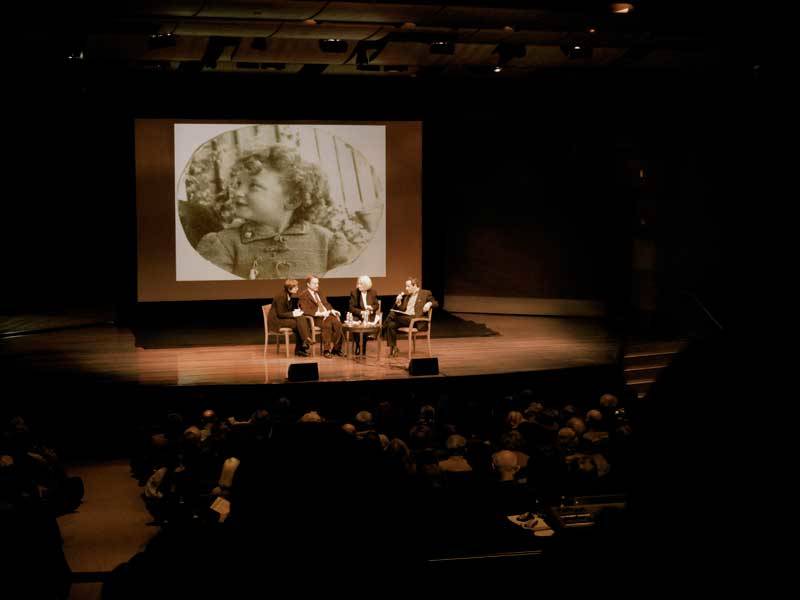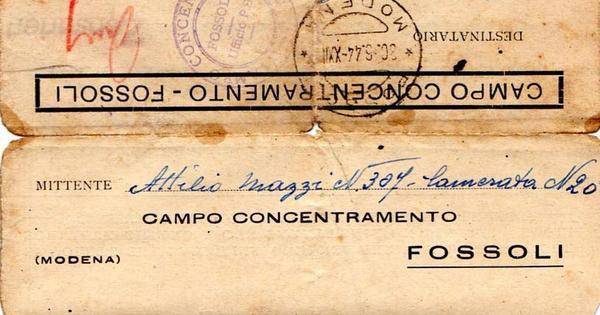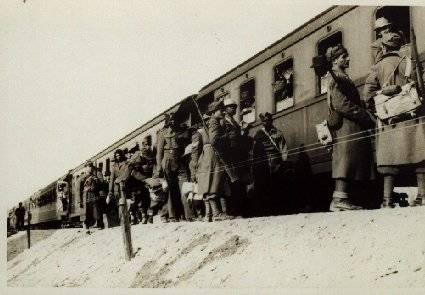In the Camp of Fossoli
Memory is a category of the present. We are shaped in our memory by the politics and the culture of our days, bur memory is also the main channel through which the past enters our minds and conscience. However, we need not only to remember, but also to know what has happened in order to make of it the basis of our present. One of the purposes of today's program is to fill the gap between knowledge and memory.
With these words the director of the Primo Levi Center Natalia Indrimi began one of the main events organized to celebrate Remembrance Day 2010. On January 31, the huge auditorium of the Museum of Jewish Heritage in Downtown Manhattan was absolutely packed, the tickets having been sold out well ahead of time.
Without a doubt, the day's program was very appealing. The screening of the documentary "Gli ebrei di Fossoli" ( The Jews of Fossoli) - a collection of intense and powerful testimonies of Holocaust survivors that spent a period of internment in the Fascist camp of Fossoli - preceded a round-table with Doris Schechter, hidden as a child with her family in Italy; Alessandro Cassin, journalist historian, and author of The Duce's Camps; and Carlo Spartaco Capogreco, professor at the Università della Calabria and president of Fondazione Ferramonti, which is dedicated to preserving the memory of the largest Jewish internment camp in Southern Italy.
Siting in the front row were some eminent representatives of the Italian and Jewish community in New York who were present at the event from its beginning. Among them, Consul General Francesco MariaTalò, Deputy Consul Maurizio Antonini, and Journalist Andrea Fiano - son of Nedo Fiano, one of the survivors that collaborated to the documentary - and journalist and writer, Ruth Gruber.
It was apparent that the screening of the "Jews of Fossoli" is an important history lesson. Very little is known about Fascist concentration camps in Italy, the life lived there, and the "sense of humanity you could still feel". The daily fighting against fleas and moths; the evenings passed sitting on the doorsteps eating a cup of vegetable soup while watching the free peasants walking by on the other side of the barbed wire; entire days when you could "work or not, at your own choice"; the negotiations at the black market, where you could sell your golden cuff links for just a slice of bread: they were all moments of a captivity, mostly remembered as "paradise", a the world used by one of the victims in the interview, as compared to the "hell" that was waiting for the interned once deported out of Italy.
Nedo Fiano was the protagonist of one of the most touching moments of the movie when I recalled the day his mother presented him with two jars of jam. "She came to me after an interrogatory with this gift. I was hungry and I emptied the jars in no time at all. I can't forget the look I saw in my mother's eyes. I was starving and she fed me. She was happy as only a mother can be when she provides for the wellness of her child. I think that it was the most beautiful gift I have ever received in my life".
The tones of the movie changed drastically towards the end. We could feel the anguish of the victims when they recounted of their final days in the camp, before the final deportation. The "perfectly crazy Nazi system"didn 't leave anybody behind, everybody had to get on those trains, whatever were his conditions."There was a 90-something-year-old woman missing at the roll call. Four of us were sent back to look for her, and took this half-dead body all the way to the train. I don't event know if she arrived to the destination alive".
It was with these images in our mind that we saw Doris Schechter stepping on the stage at the end of the screening. Her witness experience consisted in the reading of an extract from her father's memories. When she was just a baby, her family escaped from Austria and lived during the war years in a small town in the region ofAbruzzo, Guardiagrele . It was at the end of the conflict that they decided to move to the Unites Stated but, as her father wrote in his memories, "I am glad that my daughter goes to school and we are on the way to forgetting all the horrors that we went through. But I can not be happy because I miss everything that I had before. After all, I have renounced everything for freedom. Will I become a person again like all the others?"
The last question in Doris' lecture started the round table featuring the presence of Prof. Capogreco. Interviewed by Mr. Cassin, he took us on a historical journey through Fascist Italy, and acknowledged the regime's interment camps, little of which is known nowadays. "Initially there was no mention in the racial laws either of internment or of the camps. They were persecuting Jewishness as an "idea", not the physical people themselves. Thus it would be wrong to say that the camps were a result of the racial laws. They are an issue of the war."
Mr. Capogreco explained to us that the Fascists did not use the concentration camps for extermination purposes. The camps were very similar to those destined to war prisoners, and the term itself was already common in the military jargon. Being a dictatorship, in fact, the Fascist regime placed people in the camps who could not have been persecuted in a democracy, such as members of the political opposition. Thus, some of the 48 camps present in the Italian territories were designed for people suspected of conspiracy against Fascism and its leaders. "In the others, of course, those interned were mainly Jews. In Italy we did not have a great tradition of anti-semitism, beside the 'religious one'. However, the racial laws of 1938 are still a phenomenon that must be kept in consideration and studied, also because they resulted in a gradually growing persecution and in the final deportations of October-November 1943".
Before passing the microphone to the public for the Q&A section, Mr. Capogreco felt it necessary to give a final statement on the issue. We are reporting it in its entirety, for it clearly explained how racism affected life in Italy and how sometimes the government and the population had different attitudes towards the Jewish community: "These places can be considered, and have been, the antechambers of freedom and salvation, or of death, depending if the Allied troops liberated them on time. People could not be indifferent to what happened, there was some sort of solidarity and tolerance among them in Italy. After all, the country was disgraced and poor, and had just been sold by the king to the Fascist regime. The government "Repubblica di Salò", however, was just as racist as the preceding dictatorship held by Mussolini, and in the case of the camp of Ferramonti in Calabria, the deportation was already planned in July 1943. The first who were supposed to go where the foreign Jews. And then, everybody else".











































i-Italy
Facebook
Google+
This work may not be reproduced, in whole or in part, without prior written permission.
Questo lavoro non può essere riprodotto, in tutto o in parte, senza permesso scritto.